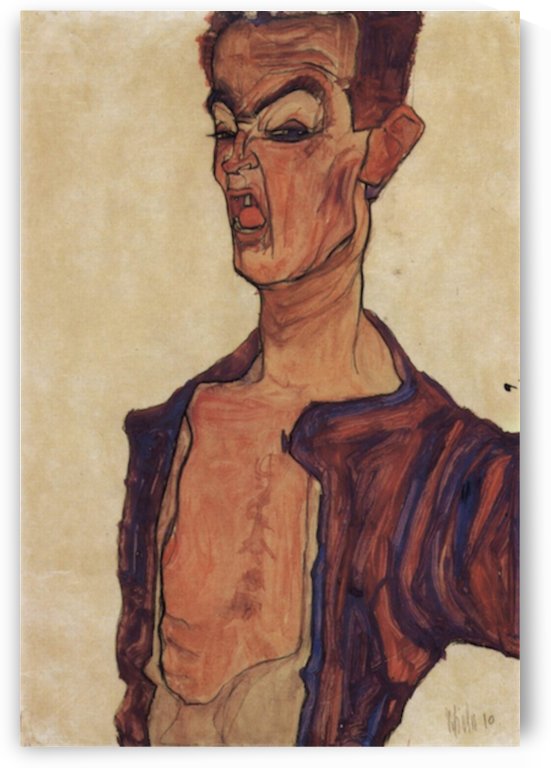Self-Portrait Screaming, 1910 by Egon Schiele

This and the three self-portraits which follow are among the earliest and most harrowing of all Schiele's depictions of self, signaling the beginning of a series now known as the radical portraits.
The painting has an angry red/orange watercolor wash all over it which amplifies Schiele's paroxysmal and frustrated outburst. His face is pulled so taut that the skin is strained across his high cheekbones. His mouth is flung wide open and emits a piercing scream as his eyes tighten up in a fearful grimace. Recalling Kraus's dictum about Vienna and isolation cells in which one can or must scream, as so much of his work at this time seems to do, the portrait also draws on Expressionist iconography, not least on Edvard Munch's celebrated depiction of The Scream.
Schiele locates himself within an imprisoning picture-frame which echoes rather than absorbs the outburst, whereas Munch uses the Northern European landscape as a backdrop and sounding-box in his work. The result is that Schiele induces a greater intensity of 'sound' and 'image' in his painting together with a characteristic sense of alienation.
The isolated white tooth which contrasts so sharply with the rawness of the red mouth heightens the already tense mood of the painting. The effect of the work is both cathartic - an attempted purging of all his pent-up frustrations by Schiele - but also exudes a feeling of nemesis - Schiele's indignation and anger at the world as a whole and his attempt to invoke a semblance of retributive justice












